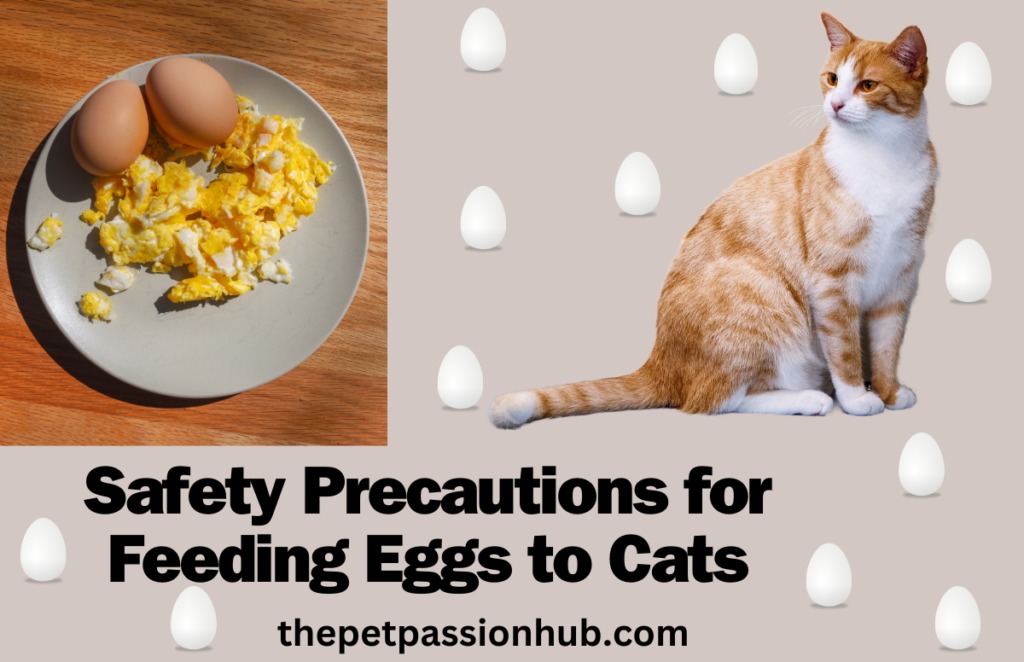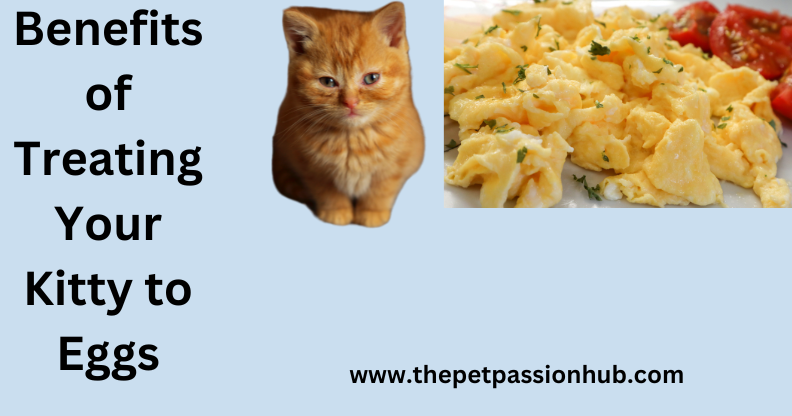Introduction
Are you a proud cat parent looking to add some excitement to your feline friend’s dining experience? Look no further!
The Ultimate Guide: Treating Your Kitty to Scrambled Eggs with Cheese is here to revolutionize your kitty’s mealtime.
Contrary to popular belief, cats can enjoy a diverse range of foods beyond their traditional kibble. And this guide will show you how to treat your beloved fur ball to a gourmet delight. That will have them purring with delight.
From the sizzle of the frying pan to the tantalizing aroma of creamy cheese. We’ll explore how you can elevate your kitty’s palate with this simple yet luxurious dish.
Why Cats Love Scrambled Eggs
Scrambled eggs with cheese is a delightful treat that can be enjoyed by both humans and feline friends.
To prepare this dish, start by cracking a few eggs into a bowl and beating them until they’re well mixed.
Then, heat a non-stick pan over medium heat and add the beaten eggs, stirring gently as they begin to cook.
Once the eggs are almost set, sprinkle in some shredded cheese of your choice. And continue to stir until the cheese is melted and the eggs are fully cooked.
The addition of cheese provides extra creaminess and flavor to the scrambled eggs. Making it an irresistible dish for any kitty.
However, it’s important to keep in mind that too much cheese. That can be hard on your furry friend’s digestive system, so moderation is key.
By following these simple steps and being mindful of portion sizes. You can treat your kitty to a delicious serving of scrambled eggs with cheese without any worries.
Incorporating protein-rich ingredients like eggs and calcium-packed cheese into your cat’s diet can provide essential nutrients for their overall health.
However, it’s important to consult with your veterinarian before introducing new foods into your cat’s diet. To ensure it aligns with their specific dietary needs.
With these considerations in mind, you can create a special meal that will delight your beloved feline companion. While also providing nourishment.
Safety Precautions for Feeding Eggs to Cats
When serving scrambled eggs with cheese to your feline friend, it’s crucial to consider the appropriate serving size and frequency.
Cats have different nutritional needs than humans. And while eggs can be a valuable source of protein for them, moderation is key.
A suitable serving size for an average-sized cat would be a tablespoon of scrambled eggs with a small amount of cheese mixed in.
As for the frequency, it’s best to limit egg treats to no more than 1-2 times per week. To avoid any potential digestive issues or dietary imbalances.

Additionally, it’s essential to monitor your cat’s response after introducing this treat into their diet.
Some cats may have allergies or sensitivities to eggs or dairy products. So observing any adverse reactions such as vomiting or diarrhea is important.
By being mindful of the serving size and frequency of egg treats. You can ensure that your kitty enjoys a balanced diet while still indulging in the occasional tasty snack.
How to Prepare Scrambled Eggs with Cheese
Treating your kitty to eggs can offer a multitude of benefits beyond just being a tasty treat.
Eggs are a fantastic source of high-quality protein, essential amino acids, and various vitamins and minerals. That can contribute to your cat’s overall health.
In particular, the protein in eggs can help support your cat’s muscle development and repair. Making it an excellent addition to their diet.
Furthermore, eggs are rich in omega-3 fatty acids, which known for their anti-inflammatory properties. And potential benefits for skin and coat health in cats.
The inclusion of eggs in your cat’s diet may also provide them with a boost of energy and vitality, helping them stay active and happy throughout the day.
When prepared properly—such as through scrambling with a touch of cheese—eggs can serve as a nutritious and delectable snack that brings joy to both you and your feline companion.
So don’t hesitate to pamper your kitty with this wholesome treat!
What Happens When You Accidentally Step on a Furry Friend?
Serving Size and Frequency for Cats
When it comes to treating your kitty, scrambled eggs with cheese aren’t the only option. For a change of pace, try offering a small amount of plain cooked chicken or turkey.
These lean proteins can provide a welcome variation in taste and texture for your furry friend.
Additionally, consider incorporating some vegetables into your cat’s treats, such as steamed carrots or green beans.
These can add variety and essential nutrients to their diet without adding unnecessary calories.
In addition to alternative treat options, consider diversifying the way you present these treats to your kitty.
Instead of serving them directly in their bowl, try hiding treats around the house for your cat to find during playtime.
This not only provides mental stimulation and physical activity but also adds an element of fun and surprise to treat time.
By exploring different options for alternative treats and delivery methods, you can keep treat time exciting and enriching for both you and your feline companion.
Benefits of Treating Your Kitty to Eggs
In conclusion, treating your kitty to yummy snacks like scrambled eggs with cheese is a wonderful way to show them love and care.
Not only does it provide them with a special indulgence, but it also creates a bonding opportunity between you and your feline friend.
However, it’s important to remember that moderation is key when spoiling your kitty with treats. Excessive consumption of rich or fatty foods can lead to health issues such as obesity or digestive upset for cats.

Therefore, incorporating these delectable snacks into their diet sporadically and in small portions is the best approach.
Furthermore, by offering your kitty tasty yet nutritious treats like scrambled eggs with cheese, you’re providing them with a source of high-quality protein and essential nutrients.
This not only adds variety to their diet but also contributes to their overall well-being.
Always consult with your veterinarian before introducing new foods into your cat’s diet, as some may have specific dietary restrictions or health conditions that require tailored nutrition plans.
With proper care and consideration, treating your kitty to delicious delights can enhance their happiness while ensuring their health remains the top priority.
Alternatives and Additional Treat Ideas
When it comes to treating your kitty, scrambled eggs with cheese are a winner, but there are also other great alternatives and additional treat ideas to consider.
For a variation on the egg theme, you could try making mini omelette bites for your feline friend.
Simply whip up some eggs with a smattering of cat-friendly veggies like spinach or shredded carrots, pour the mixture into greased mini muffin tins, and bake until set.
These bite-sized treats can be a fun way to add some variety to your cat’s snack selection.
If you’re looking beyond egg-based cat treats, consider exploring some protein-rich options like cooked chicken or turkey.
Chunks of these meats make fantastic natural treats that will satisfy your kitty’s carnivorous instincts. You could also experiment with freeze-dried fish or dehydrated meat treats to provide an extra boost of nutrients in an easily digestible form.
Keeping things fresh and diverse in the treat department can help keep your cat engaged and excited about snack time while ensuring they get the nutrition they need.
Conclusion: Spoiling Your Kitty with Yummy Treats
In conclusion, spoiling your kitty with yummy treats like scrambled eggs with cheese can be a delightful way to show your furry friend some extra love.
While it’s important to indulge our pets in moderation and ensure that the treats are appropriate for their dietary needs, the occasional serving of cat-friendly cheese options mixed with eggs can make for a special bonding moment between you and your feline companion.
Remember to consider lactose-free or low-lactose cheese varieties, such as cheddar or Swiss, as these are generally well-tolerated by cats and can add an extra layer of flavor to the dish.
Offering these delectable treats not only satisfies your kitty’s palate but also provides essential nutrients like protein which supports their overall health.
However, always keep in mind that every cat is unique, so it’s advisable to consult with your veterinarian before introducing new foods into their diet.
By incorporating these scrumptious indulgences in a mindful and responsible manner, you can elevate mealtime into a shared experience full of joy and gratitude between you and your beloved pet.
FAQs
- Can cats eat scrambled eggs with cheese?
Yes, in moderation, cats can enjoy scrambled eggs with cheese as an occasional treat. - Is it safe to feed my cat raw or undercooked eggs?
No, it is not recommended to feed your cat raw or undercooked eggs due to the risk of salmonella contamination. - How often can I give my cat scrambled eggs with cheese?
As an occasional treat, you can give your cat scrambled eggs with cheese a few times a week in small portions. - Are there any health benefits for cats from eating scrambled eggs with cheese?
Scrambled eggs can provide a good source of protein and essential nutrients for your cat’s diet. - Should I add any seasoning or spices to the scrambled eggs for my cat?
It’s best to serve plain scrambled eggs without any seasoning or spices as they can be harmful to your cat. - Can kittens eat scrambled eggs with cheese?
Kittens can eat small amounts of scrambled eggs with cheese once they are weaned, but it’s important not to overfeed them. - Are there any potential risks associated with feeding cats scrambled eggs with cheese?
Feeding too much dairy or high-fat foods like cheese could lead to digestive issues in some cats. - What are signs that my cat is allergic or intolerant to eggs or dairy products?
Watch out for symptoms such as vomiting, diarrhea, or skin irritations which could indicate an allergy or intolerance to these ingredients.
